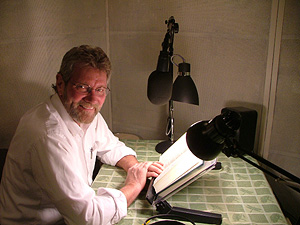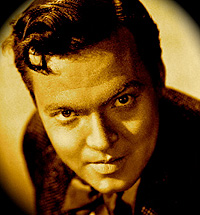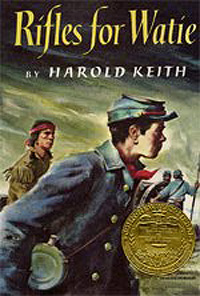
|
The Voice Of Hector Lassiter:
Actor Tom Stechschulte originally set off down a much different career path: He intended to own and operate a travel agency. "Some son of a bitch came in and dared me to audition for the spring play," Tom said in an interview from his home in New Jersey. "It would have been my junior year of college. It was the part of Bill Sikes (in Oliver!). I'd seen the movie, and thought, "Well, what the hell, he doesn't have to sing." It ended up he does have a song, they just didn't use it in the movie." Regardless, Tom landed the role. "I got the part and kind of got the bug, too. I called home and my Dad said, 'Well, son, if that's what you want to do, you know your mother and I will support you, all the way.' Then I hear the hand go over the microphone part of the phone and I hear, 'Oh Christ Dorothy, now he wants to be actor!'" True to his word, his father hung in with Tom. "He hated live theatre but he came to everything he possibly could," Tom said. Tom went on to perform in many of the classics of American theater: Cat on a Hot Tin Roof, East of Eden, Inherit the Wind and To Kill A Mockingbird. "I was in Chicago, and I had an audition for Sweet Bird of Youth with a wonderful actress, Irene Worth, who has been said to be the finest actress in the English language, and with Chris Walken. I got an understudy thing in that and one of the guys I was understudying dropped out and we took the show to the Kennedy Center and eventually to Broadway. A great way to come to New York." Tom soon branched from stage into film and television acting. Like many actors who live in New York or New Jersey, Tom has also cropped up in several roles in the various incarnations of Law & Order in recent years. "It's the old open-call thing. You go in there and once you do a couple they get to know you. The only problem is, you can only do one-a-year unless you're a recurring character." THE MOVE TO AUDIO In 1996, Tom got his start in the audio book industry by trying-out for audio book publisher, Recorded Books. "Again, it was an audition," he said. "They were looking for a specific voice on a multi-narrator book—Ernest J. Gaines' A Gathering of Old Men. They needed the character of the college football star whose brother was the guy who got murdered. I read for it and Claudia Howard (of Recorded Books) had me back to test a few other books. I got this really nice series by David Handler. He's one of the best-kept secrets, I think. I just love his Stewart 'Hoagy' Hoag books." Tom is a native of Pittsburgh, Pennsylvania ("Kind of the definition of a bummer," he said, "I was born in Honolulu and raised in Pittsburgh...but I do love Pittsburgh."). Despite his rust-belt origins, Tom's voice and early roles earned him a spot as the go-to guy for southern-tinged roles in the audio book world. "Mostly, I was kind of the token hick—the southern guy—mainly because my resumé was reading like the credits for Hee-Haw...all these good ole boys I was playing." He'd had stage roles in Eccentricities of a Nightingale, which he described as a "re-written version of Tennessee William's Summer and Smoke," and as "Old Doc in Crimes of the Heart which takes place in Mississippi. I did Foxfire with Hume Cronyn and Jessica Tandy and Keith Carradine—again, the old Southern boy." ON BEING LASSITER
In the early going, Tom honed his narrating skills by reading to his young son. "There are different ways of approaching a character," he said. "As trite as it sounds, an animal image for a character sometimes helps if you're having trouble." Tom is now the voice of Hector Lassiter in the unabridged recordings of Head Games and Toros & Torsos. In Head Games, Hector visits the set of Welles' noir classic, Touch of Evil. In Toros & Torsos, Hector is around the fringes of the shooting of the climax of Orson Welles' film, Lady From Shanghai. The Lassiter series often requires Tom to portray historical figures. Tom said, "Take Orson Welles—his voice inflections and rhythms just seem to go everywhere, so that's what I kind of did with him the second time around." "I watched Touch of Evil," Tom said about his preparation for recording the second Lassiter novel. "I'd seen it before, but it wasn't until Toros & Torsos that I rented Touch of Evil and watched it and loved it. God, I loved it." Welles' voice is well-known. Shaping the voice and character of a fictional character such as pulp novelist/adventurer Hector Lassiter, "the man who lives what he writes and writes what he lives," requires a different approach: "I think after doing so many of these things, it's almost like having a John Ford corps of actors that you use," he said. "You kind of whip out a character and say, 'Let's cast this voice for that character.' There is a little bit of difference between Hector younger and Hector older. He's a little gruffer. Whiskey and Pall Malls will do that to a voice." Lassiter also hails from coastal Texas and so has an accent that comes through more strongly at some times than others. "One of the characters says to Hector, 'You pull out that southern drawl when you need it,'" Tom said. "That's another thing to consider—what other people in the book or script say about the character. You can take that into consideration too, whether it's true or not." Having portrayed him a couple of times now, the actor has his own take on the character of Hector Lassiter as a personality. "One of the things I like about Hector—he is not your perfect hero. He can be a real asshole sometimes, but he does seem to have a code. There's a dichotomy there with him. I think he can be very selfish, then the next week just do something so wonderful and unselfish." Ideally, Tom says, he reads each book assigned him at least several times before recording it. "I would like to have read it at least twice before I get in front of the mic. A lot of times, I'll come into the city early and get to brush up on stuff on the bus going in. I'll stop and get a bagel and a cup of coffee for an hour or so, and get some work in then." THE ART OF "VOICE ACTING"
Tom said, "I sit still with my elbows on the table, usually. But not always. Sometimes a little physical jerk will put something into the voice. And you know you experiment around with a different shape of your mouth. For John Huston in Toros, I kind of stuck my lower jaw out because he seemed to have a very different sound and it sounded like John Huston if I got my chin out there." Ernest Hemingway, who appears at length in Toros, presented a different challenge. "I went online and listened to him. I thought he was a really lousy public speaker. He got into a certain rhythm. He really should have let Orson Welles narrate." (Hemingway scripted and ultimately narrated The Spanish Earth, a documentary about the Spanish Civil War, after objecting to Welles' original narration.) "I detected a little bit of that speech impediment of Hemingway's that you talk about in Toros, but I thought it really wasn't that much to use it throughout," he continued. "I think I put it in one little scene. I couldn't find anything like a normal conversation with Hemingway. He was always very aware of the microphone." Because the Hector Lassiter series does incorporate so many historical figures—Tom has had to portray Welles, Hemingway, Marlene Dietrich, Rita Hayworth, George W. Bush and Alfred Hitchcock, among others—it begs the question, as an actor is the goal to sound-like the "character" or to project that personality...to evoke persona? "Definitely the latter; I'm no Will Ferrell or Robin Williams," he said. "Even if I probably could do a perfect imitation, I don't think I would do it." THE McCARTHY BOOKS
Tom also put his voice to Cormac McCarthy's The Road and No Country for Old Men. "I was so grateful to get the McCarthy books," he said. "The Road was, sheesh. I've never been fond of apocalyptic type books, but this one...? Although it had a set of problems, in a way. He (McCarthy) described the landscape and it was pretty much the same throughout the whole book. The descriptions, I found, were the most challenging. But I really concentrated on the relationship between the son and the father." Having put his own rendition on a particular novel that is sometimes later adapted to film, it begs the question if the actor feels a temptation to see that novel's interpretation by other creative artists in a different medium. He said, "I loved what they did with No Country For Old Men. I thought it was a wonderful movie." Asked if there have there been particular books or projects he's gone after as a narrator, he said, "There was one book. It's called Rifles for Watie (Harold Keith) and it's a kid's book. It was like the first big book I read. You know, they carted our class to the library and the librarian read from three books and got to the very exciting part, then closed the book and said, 'If you want to find out what happens, you have to read the book.' I was totally enthralled with this book. "One day out of the blue, I saw Claudia at the Recorded Books' office and I said, 'Have you ever heard of a book called Rifles for Watie?' She said, 'Why do you ask?' I said, "It was the first really big thick book I ever read and I really enjoyed it when I was in fourth or fifth grade.' She said, 'That's funny you should say that, because we just got the rights for it yesterday.' I asked, 'Who are you considering to narrate it?' She threw it my way. I'm surprised it's never been made into a movie. It's a nice little story. If you go to Civil War battlefields and you go to the gift shop, it's usually there." MAKING A RECORDED BOOK After being cast as narrator for a given book, and after having read the novel in question many times and shaped notions about characters and delivery, the actor then goes into the studio to put down tracks with a director. I asked about the audio director's role and whether it in some way parallels that of a film or theater director. "No, it's not nearly the same," he said. "It depends on who's directing it. Many of the directors don't have theatrical backgrounds a lot of the time. I always encourage them to feel free to stop me any time. I know some narrators who get a little belligerent about that, but I like the input. If I disagree with it, we'll argue it out and hopefully come to a mutual consensus on something." The recording of the book can vary by property or by recording studio: "What's great about Recorded Books," Tom said, "is that when you first start working there, you only work maybe two-hour sessions. You're concentrating on so much stuff, after a while you start to get a little goofy. A lot of the big publishing houses, you might go in there for seven or eight hours. "I've been doing it a while, as have many of the narrators down there, so I'm up to about five-and-a-half-hour sessions, usually with a half-hour off for lunch and a break whenever you want to take it. They're very lenient about that at Recorded Books. It's such a comfortable working environment there. Claudia and David Markowitz there have just set a great standard." Once a recording is laid down, Tom said he may revisit the work, but usually only in fragments. "I'll listen to parts of them," he said. "If I was worried about a certain chapter, I'll hunt through that and find that particular part. I was very worried about some of the singing in Head Games. But I actually fell in love with the song Hector always wanted to hear, Cancion Mixteca. We found a couple of copies of it online, and there was one that was done beautifully, very slow, and that was the one I used. But we sometimes had to take it a half-line or one-line-at-a-time and stop tape, then work on the next line. I thought it came together fairly well." NARRATOR/AUTHOR INTERACTION Mystery novelist Craig Johnson recently confided he learned George Guidall, narrator of Johnson's Walt Longmire series, was uncomfortable singing. Johnson promptly wrote a singing scene into his next novel. Johnson chose not just any song, but Cattle Call, which demands a certain amount of yodeling, jokingly hoping to set his narrator to squirming. Tom said the author of another series, narrated by actor Barbara Rosenblat, does a similar thing. "The author loves to throw in twelve people sitting around a table," he said. "One's Armenian and one is something else like that and then just this rapid-fire dialogue just to throw it at Barbara." In a scene such as the one he describes, one wonders if the narrator records in pieces, or if he or she can so deftly toggle between voices to establish the sense of real conversation. "It depends on how invested you are in it and how invested the characters are," he said. "Otherwise it can be a stop and go thing. When I first started recording, I'd mark down everything. Just about every-other sentence had a marking of some kind on it. I don't do that as much anymore. A lot of times, directors or engineers will stop me and say, 'You kind of came in with that other character a little too fast.' And I'll say, 'Well, he's interrupting the person.' As long as there's a differentiation in the voice I don't think it's a problem." Looking back over his body of audio work, Tom said there are a few recordings that stand out for him. "There was one I just loved doing. It was called Eddie's Bastard (William Kowalski). I was very pleased. I'm never totally pleased with anything, but this one I was very pleased with. Also with Crazy in Alabama (Mark Childress) and with Shutter Island (Dennis Lehane). And of course with your two books—man, I just fell in love with your writing." As November, 2009 wound down, Tom was preparing to record Ken Kesey's Sometimes A Great Notion. May, 2010 will also bring his recording of the third Hector Lassiter novel, Print the Legend. No singing in this book, but it's not without challenges: Hector will meet a young woman with a Scottish accent, who is depicted in a harrowing birth scene. . . . . . . . . . . . . . . . © December, 2009, Craig McDonald
More on Tom Stechschulte at imdb |
||||||||||||




